As a writers we should always try to expand our arsenal of expression and
engagement. By seeking new weapons of persuasion we improve our ability to
gain new readers. One of the most effective techniques for enhancing writing
is inverse language techniques, which involves flipping the usual structure or
order of words in a sentence, creating a unique and unexpected emphasis and
emotional effect. Reviewing these benefits of inverse language, examples from
famous literature, and practical tips for incorporating these techniques into
writing will boost your engagement ability.
Benefits of Using Inverse Language Techniques
Using inverse language techniques in your writing can have a multitude of
benefits. Firstly, it adds a touch of creativity and originality to your work.
By breaking away from traditional sentence structures, you can catch your
readers' attention and engage them on a deeper level. Inverse language
techniques also allow you to emphasize certain words or phrases, creating a
sense of emphasis or urgency. This can be particularly useful when conveying
powerful emotions or important ideas.
Furthermore, inverse language techniques can enhance the rhythm and flow of
your writing. By altering the order of words, you can create a more musical
and lyrical quality to your sentences. This can make your writing more
enjoyable to read and leave a lasting impression on your audience.
Additionally, using inverse language techniques can challenge your own writing
skills and push you out of your comfort zone. By experimenting with different
sentence structures, you can expand your creative boundaries and discover new
ways to express yourself.
Examples of Inverse Language Techniques in Famous Literature
Some of the most renowned authors have used inverse language techniques to
great effect in their works. One notable example can be found in William
Shakespeare's play, Romeo and Juliet. Juliet says, "Romeo, Romeo,
wherefore art thou Romeo?" With the verb "art" placed before the subject
"thou," Shakespeare provides a line difficult to forget but more importantly
his use of inverse language provides a heartfelt desire.
Another example can be found in Charles Dickens' novel, A Tale of Two Cities.
In the opening line, Dickens writes, "It was the best of times, it was the
worst of times." By juxtaposing the positive and negative phrases in an
inverted structure, Dickens creates a powerful contrast. This technique sets
the tone for the entire novel, highlighting the duality and complexity of the
story.
Types of Creative Writing That Can Be Enhanced with Inverse Language
Techniques
Inverse language techniques can be applied to various types of creative
writing, allowing you to bring a fresh perspective to your work. Whether you
are writing poetry, fiction, or even non-fiction, these techniques can add
depth and intrigue to your writing. In poetry, for example, inverse language
techniques can create striking imagery and evoke strong emotions. By playing
with the order of words, you can create unexpected metaphors or emphasize
certain sounds, enhancing the overall impact of your poem.
In fiction writing, inverse language techniques can be used to develop unique
and memorable characters. By giving characters unconventional speech patterns
or thought processes, you can make them stand out in the minds of your
readers. In non-fiction writing, inverse language techniques can be employed
to make complex ideas more accessible and engaging. By presenting information
in a unique and unexpected way, you can capture your readers' attention and
make your writing more memorable.
How to Incorporate Inverse Language Techniques Into Your Writing
Now that you understand the benefits and possibilities of inverse language
techniques, you may be wondering how to incorporate them into your own
writing. The key is to start small and gradually experiment with different
sentence structures. Begin by identifying a sentence in your writing that
could benefit from an inversion. It could be a sentence that lacks impact or
needs a fresh perspective.
Once you have identified a sentence, try flipping the order of the words or
phrases. Play around with different arrangements to see which one creates the
desired effect. Keep in mind that not every sentence will lend itself well to
inversion, so don't force it if it feels unnatural. Practice is key in
mastering this technique, so try incorporating inverse language techniques
into your writing regularly. Over time, you will become more comfortable and
proficient in using them.
Common Mistakes to Avoid When Using Inverse Language Techniques
While inverse language techniques can greatly enhance your writing, there are
some common mistakes to be aware of. One mistake is overusing inverse language
techniques to the point where they become distracting or difficult to
understand. Remember that these techniques are meant to add depth and
creativity, not confuse your readers. Use them sparingly and strategically to
ensure they have the desired impact.
Another mistake is neglecting the clarity and coherence of your writing in
pursuit of unique sentence structures. While it's important to experiment and
push the boundaries of your writing, it should never come at the expense of
clarity. Make sure your sentences are still grammatically correct and convey
your intended meaning clearly. Always prioritize effective communication over
stylistic flourishes.
Writing Exercises to Practice and Improve Your Use of Inverse Language
Techniques
To improve your mastery of inverse language techniques, it can be helpful to
engage in writing exercises specifically designed to practice this skill. One
exercise is to take a familiar sentence or quote and rewrite it using inverse
language techniques. This will help you become more comfortable with flipping
the order of words and phrases. Another exercise is to write a short story or
poem entirely using inverse language techniques. This will challenge you to
think creatively and experiment with different sentence structures.
You can also analyze your favorite pieces of literature and identify instances
of inverse language techniques. Take note of how the author uses these
techniques to enhance their writing and try incorporating similar strategies
into your own work. By regularly practicing these exercises and studying the
techniques used by skilled writers, you will improve your ability to use
inverse language techniques effectively.
Resources and Tools for Mastering Inverse Language Techniques
If you're looking to delve deeper into the world of inverse language
techniques, there are several resources and tools available to assist you.
Online writing communities and forums can provide valuable feedback and
support as you explore this writing technique. Additionally, there are
numerous books and guides that specifically focus on creative writing
techniques, including inverse language techniques. These resources can provide
detailed explanations, examples, and exercises to help you master this skill.
In terms of tools, there are various writing software programs and
applications that can aid in incorporating inverse language techniques into
your writing. These tools often include features such as grammar and style
checkers, which can help you identify opportunities for inversion and provide
suggestions for improvement. Some popular writing software programs include
Grammarly, ProWritingAid, and Hemingway Editor.
Exploring Other Advanced Writing Techniques to Complement Inverse Language
Techniques
While inverse language techniques can greatly enhance your writing, it's
important to explore other advanced writing techniques to further develop your
skills. One technique to explore is the use of symbolism. Symbolism involves
the use of objects, characters, or actions to represent abstract ideas or
concepts. By incorporating symbolism into your writing, you can add layers of
meaning and depth to your work.
Another technique to consider is the art of storytelling. Effective
storytelling involves creating compelling narratives that captivate your
readers from beginning to end. By mastering the elements of storytelling, such
as plot development and character arcs, you can create engaging and memorable
pieces of writing. Additionally, exploring different literary devices, such as
metaphor, simile, and foreshadowing, can further enhance your writing and make
it more impactful.
Embracing Your Creative Potential Through Mastering Inverse Language
Techniques
In conclusion, mastering the art of writing with inverse language techniques
can unleash your creativity and elevate your writing to new heights. By
utilizing these techniques, you can add a touch of originality, rhythm, and
emphasis to your writing. Remember to start small and gradually incorporate
inverse language techniques into your work. Avoid common mistakes and
prioritize clarity in your writing. Engage in writing exercises and utilize
available resources and tools to improve your skills. And finally, don't limit
yourself to inverse language techniques alone; explore other advanced writing
techniques to complement and enhance your work. Embrace your creative
potential and let your writing soar.
 Question? Comment? Rebuttal?
Question? Comment? Rebuttal?
Copy the article's title or link to send with your response.

ARTICLE
June 14, 2024
Fallacies & Rhetorical Devices: Thank You for Smoking
How rhetoric uses indirect argument, emotional appeals, and rhetorical questions to convince the audience. Despite the lack of concrete evidence or counterarguments, audiences are receptive to these persuasive techniques, demonstrating the power of rhetoric in influencing opinions and the importance of critical analysis to avoid being misled by flawed reasoning.
READ
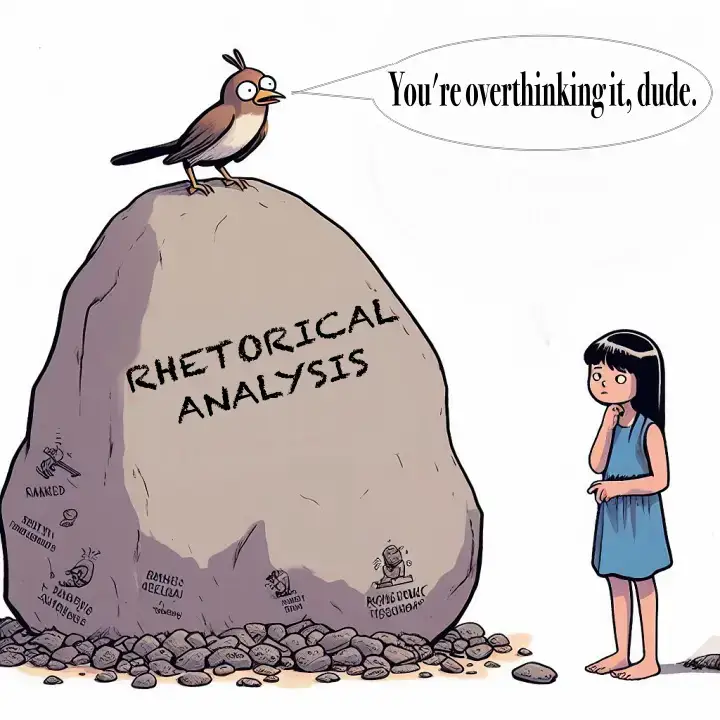
ARTICLE
November 15, 2023
A Complete Guide to Understanding & Using Rhetorical Analysis
Writers can improve their ability to influence their audience by studying how different media, like film, writing, symbols, and speeches, communicate and shape meaning. This is the goal of rhetorical analysis.
READ

ARTICLE
November 10, 2023
Leprechauns: The Modern Iteration
A leprechaun is a small, bearded, and green-clad man from Irish folklore who has magical powers, such as granting wishes or hiding a pot of gold at the end of a rainbow. While other mythical creatures, such as vampires, have changed drastically over time and media, the leprechaun has remained largely consistent with its original depiction. The contrast between the ancient tale of “The Adventure of Fergus son of Léti” and the modern movie, Leprechaun, shows how the leprechaun has evolved, but also how it has preserved its core features.
READ
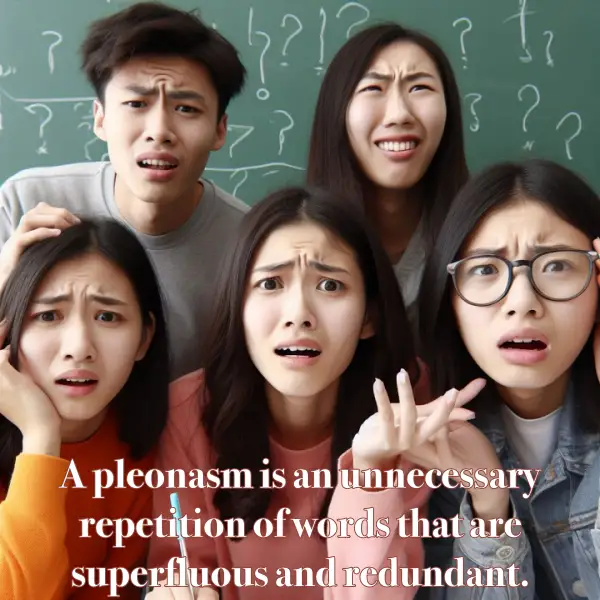
ARTICLE
October 31, 2023
Streamline Your Writing: A Pleonasm Survival Guide
Writing concisely and impactfully is a skill that can be mastered with practice and attention to detail. One of the key aspects of concise and impactful writing is avoiding pleonasms, which are unnecessary words or phrases that dilute your message. Learn how to identify and eliminate pleonasms, how to avoid common pleonasms, and how to edit and proofread your content to eliminate pleonasm.
READ

ARTICLE
October 28, 2023
Death of the Centaur in Modern Literature
Centaurs are half-man and half-horse creatures that originate from ancient Greek myths. The article examines how centaurs once embodied the tension between the civilized and the barbaric aspects of humanity, and how their symbolism became an idiomatic motif of fantasy and science fiction.
READ

ARTICLE
October 4, 2023
The Power of Narrative: A Comprehensive Guide to Defining Narratology
Discover the fascinating world of narratology and its impact on literary analysis. Explore the intricate narrative structures and theories of Mikhail Bakhtin, shedding new light on the art of storytelling.
READ

ARTICLE
October 4, 2023
Boost Your Creative Writing Skills with Action-Packed Gerunds, Adjectives, & Adverbs
Learn how to pack your fiction with action and captivate your readers from the very first page. Discover the importance of action in writing and explore the power of gerunds, adjectives, and adverbs in creating dynamic and engaging prose. Discover how to use gerunds to add action to your writing, enhance your descriptions with descriptive adjectives, and power up your prose with impactful adverbs. With examples, tips, and exercises, this article is a valuable resource for any writer looking to elevate their storytelling skills.
READ

ARTICLE
October 3, 2023
How to Embark on The Write Journey to Writing Success
To become a successful writer, one must navigate a path filled with ups and downs. This journey requires determination, hard work, perseverance, and a lot of luck. Setting clear objectives is the initial step toward accomplishing success. With daily writing practice, one can develop their skills and derive pleasure from the process. Overcoming distractions at home is vital for maintaining a consistent writing routine. Drawing inspiration from diverse sources can spark creativity and keep the writing process thrilling. Ultimately, embarking on the journey to become a writer is a personal and transformative experience that necessitates dedication and introspection.
READ

ARTICLE
September 27, 2023
Exploring Human Existence: Writing from an Existential Perspective
Examine the philosophical and literary movement of existentialism, which seeks to understand human existence in an absurd and irrational world. The author explains the key concepts of existentialism, such as existence precedes essence, freedom, and responsibility, and how they influence the writing of existentialist authors. The author also analyzes the role of religion, especially Christianity, in existentialist thought and writing.
READ
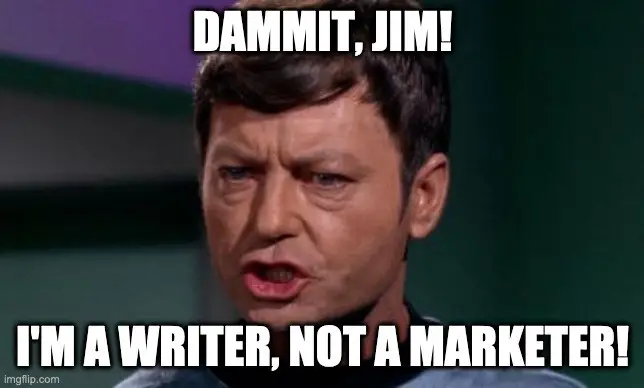
ARTICLE
September 22, 2023
Why you won't sell books on Social Media
The Reality of Social Media Advertising for Book Marketing: A Complex Method for Engagement and Effectiveness that Fails to Deliver This article delves into the intricacies of social media advertising and engagement for book marketing. It highlights the limitations of the general assumption that people click on social media ads and make purchases. By understanding the multifaceted nature of social media platforms and the diverse reasons individuals engage with them, the article emphasizes the need for a different approach to advertising books.
READ
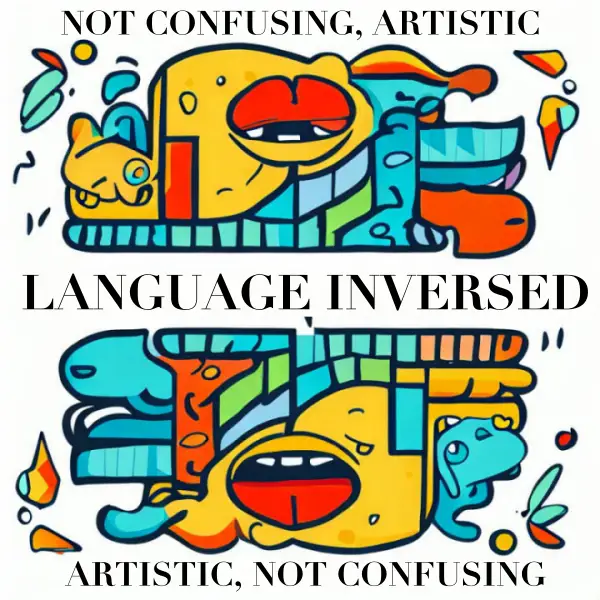
ARTICLE
September 19, 2023
Unleash Your Creativity: Mastering the Art of Writing with Inverse Language Techniques
Learn how to use inverse language techniques to spice up your writing and captivate your readers. This article will show you the benefits, examples, and tips of this powerful writing tool.
READ
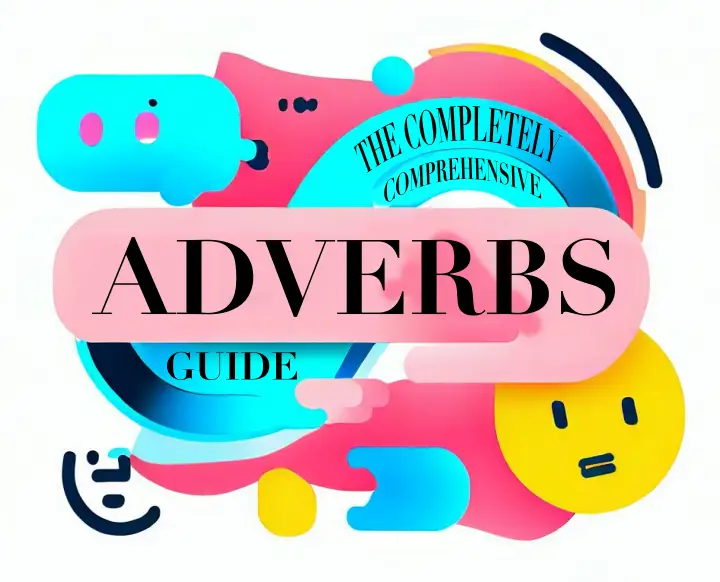
ARTICLE
September 18, 2023
Adverbs: Misunderstood, Abused, & Powerful Tools
Adverbs are often misunderstood and abused by writers, but they can also be powerful tools to express yourself. This article explains how to use adverbs wisely and avoid the pitfalls of overusing or misusing them. It also gives examples of how adverbs can add flavor and nuance to your writing, especially in dialogue.
READ
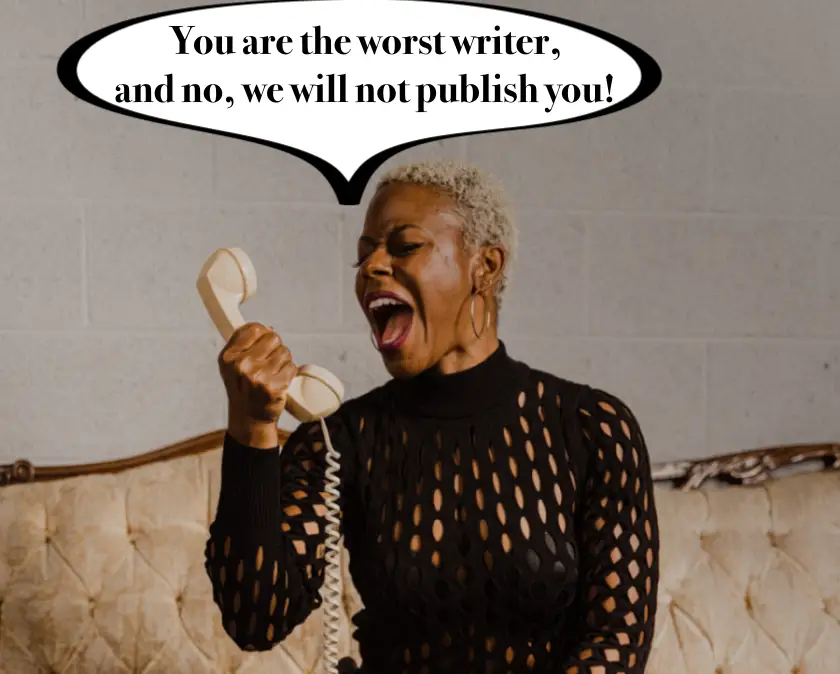
ARTICLE
August 2, 2023
Strategies to Handle Publisher Rejection & Not Give Up The Writing Dream
How do you deal with publisher rejection and keep pursuing your writing dream? It’s not easy, but it’s possible. Learn to handle publisher rejection and not let it stop you from writing. You will explore different strategies and mindsets that can help you overcome rejection, learn from it, and move on with confidence and resilience. You will also learn how to understand the publisher’s point of view and increase your chances of getting published.
READ

ARTICLE
July 31, 2023
How to Deal with Writing Pet Peeves & Learn from Them
What are some of the things that annoy you as a writer? Maybe it’s the grammar police who nitpick every mistake, or the plagiarists who steal your ideas, or the clichés that make your writing boring, or the unrealistic expectations that make you doubt yourself. You will find out how to deal with these pet peeves and turn them into learning opportunities for your writing craft.
READ

ARTICLE
July 26, 2023
Learn to Deal & Not Deal With Writing Critics
What passes as constructive criticism todqy provides no benefit for writers. Telling people to be nice when critiquing work has a blinding effect that adds a positive ring to a sad manuscript. Likewise, literature's trolls dish out banal, useless, opinionated criticism as if they possessed a degree from every ivy league school. Learn what not to do and what comments not to read in the humorous piece about writing and criticism.
READ

ARTICLE
July 7, 2023
How to Avoid Pedantic Editing & Create Original, Stylish Writing
How can writers express themselves freely and creatively in a world where editors and critics enforce strict rules and standards? How can writers revise their work without losing their voice and vision? Discover how to overcome the challenges and frustrations of editing, and how to break free from the constraints and conventions of writing.
READ

ARTICLE
June 11, 2023
Exploring the Depths of Human Experience
A writer reflects on his life experiences and how they have shaped his writing career. He shares his insights on courage, honesty, and self-expression, and encourages other writers to face their fears and write the scariest shit they can think of.
READ

ARTICLE
June 10, 2023
Writing isn’t some mystical mystery
As it turns out, writing isn’t just about putting words on a page. Explore the deeper themes of legacy, reputation, and self-delusion through personal anecdotes, poetry, and introspection. Consider the power and purpose of writing.
READ

ARTICLE
June 9, 2023
Writing's Struggles & Joys - Advice From an Old writer
An old writer’s advice to young writers: don’t think about writing poetry or prose, just write what’s on your mind now. A heartfelt piece about writing and loss, encouraging young writers to write without overthinking.
READ
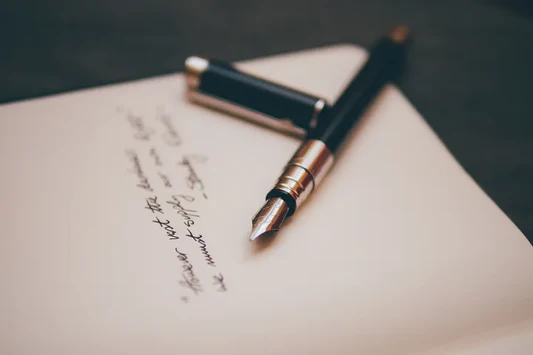
ARTICLE
April 24, 2023
Learn to Write Mosaic Poetry To Improve All Verse
Working with mosaic poetry can help you become skilled at writing in meter because it allows you to hear how words fit together more effectively when spoken. This practice can lead to the creation of more complex poetry with refined meaning as you learn to incorporate other techniques into your own work.
READ

ARTICLE
April 24, 2023
How Writing Teaches You: The Craft and the Lessons
Learn how the craft of writing teaches you by perpetually teaching, resolving, and articulating your perceptions. This article will show you how writing helps you to develop your critical thinking, creativity, and communication skills. You will also see how writing can enrich your personal and professional life.
READ

ARTICLE
April 24, 2023
Thinking first-person POV is lazy writing isn’t wrong — it’s stupid.
An arguement that third-person POV lacks realness and natural voice, making it difficult for readers to become emotionally invested.
READ
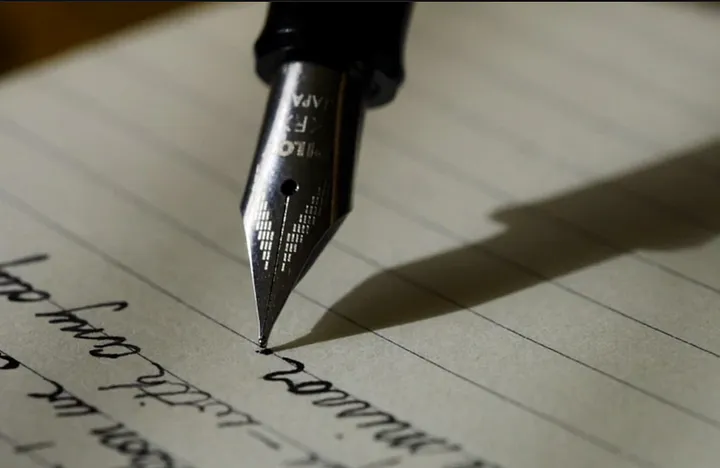
ARTICLE
April 24, 2023
Persuasive Writing: The Key to Successful Writing
Learn why persuasion is the primary goal of writing and how to determine if you write persuasively.
READ

ARTICLE
April 24, 2023
How Ignoring Theme Ruined the Asexual, Female, Blue Alien Story
How do you create a theme for your story? Why is theme important for fiction writing? Learn how theme gives meaning and direction to your story, and how ignoring theme can lead to derivative and inconsistent stories. You will also find out how to use theme as a guide for your worldbuilding and character development, and how to avoid common pitfalls when writing about different cultures and perspectives.
READ

ARTICLE
April 24, 2023
How to Write a Story That Comes True by Lying to Yourself
This author shares a bizarre and hilarious experience of writing a story about a guy who lies a lot, and then having the same guy lie to him by telling him the same story that he wrote, without knowing that he wrote it. The author also discusses the idea that to write a compelling narrative, a writer must convince himself that others believe his lies or story’s fictional elements.
READ

ARTICLE
April 24, 2023
Mimesis: The Secret to Realistic and Engaging Writing
Learn how to use mimesis to write more realistically and engagingly. Mimesis is the imitation of reality in art and literature. This article will teach you how to reduce unnecessary pronouns, narrative distance, and verbosity in your writing.
READ

ARTICLE
April 24, 2023
The Secret of Writing Engaging Free Verse: Syllabic Poetry
Free verse is a common form of poetry with no specific requirements for meter or rhythm. It allows writers freedom but can cause reader engagement issues. Readers may need to pay attention to mechanics such as stanza breaks and punctuation to understand the poem’s meaning. Free verse poems are stylized by individual poets, so readers must study their unique forms and attributes. This need to study requires poetry to be engaging.
READ
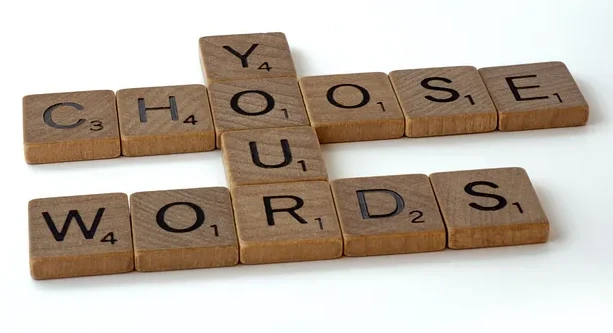
ARTICLE
April 24, 2023
How to Stop Undermining Your Writing with Faux Humility
How do you write with confidence and authority? How do you avoid faux humility in your writing? Dpn't write with faux humility because it harms your writing and reinforces ignorance.Find out how to write with facts, logic, and evidence, and how to be open to criticism and feedback. Discover how to use writing as a tool for learning and seeking the truth.
READ

ARTICLE
April 24, 2023
Christians, Christian T. Roll, & Thoughts on Satire
Learn about satire. Satire is a literary genre that criticizes human nature and society. It can bring attention to overlooked issues, advocate for social reforms, and provide new perspectives on issues. Satire can also open up discussions about justice, morality, and stigmas. It is important for writers to understand and learn to use satire to make their writing more persuasive.
READ
 Question? Comment? Rebuttal?
Question? Comment? Rebuttal?




























